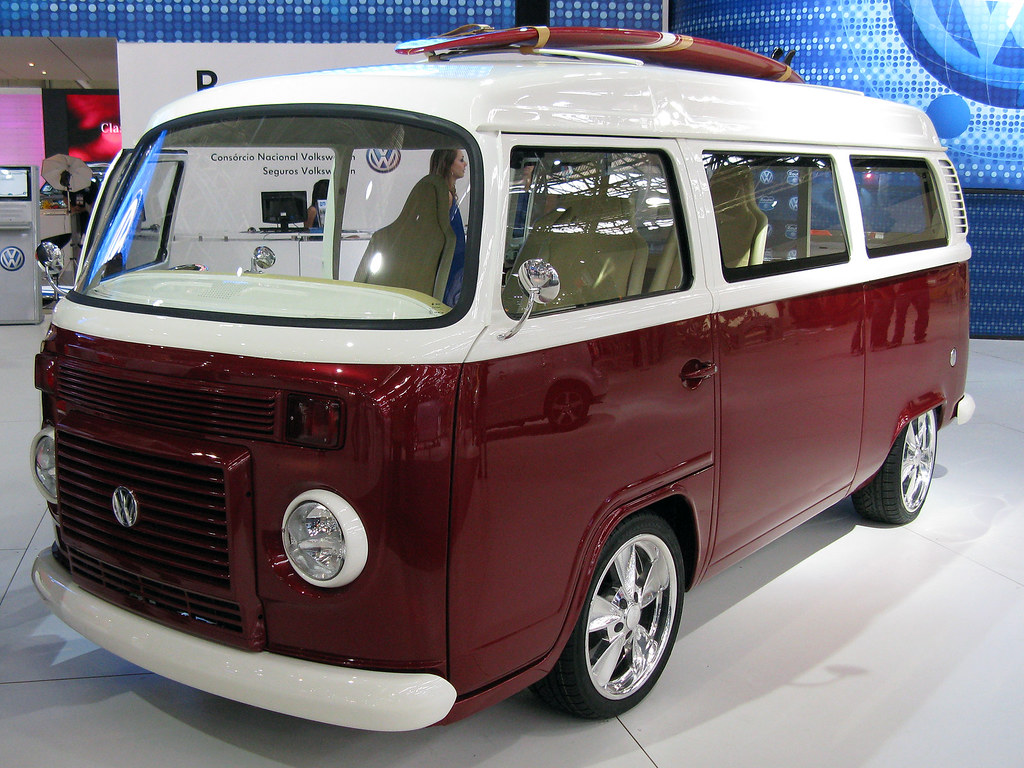An Indonesian mechanic has created what he claims is the world’s longest Volkswagen Kombi van – the much-loved ‘hippie wagon’.

The iconic vehicle – which was first produced in Germany in the 1950s – finally ended its epic journey in 2013 when it went out of production.
But mechanic Wahyu Pamungkas, from Semarang, Indonesia, found a way to infuse his van with a new lease of life.
Mr Pamungkas and his team of 30 workers spent a whole year creating the new vehicle, which stretches to 7.6metres long – almost three times the length of a Smart car, at 2.6metres.
Dream: Indonesian mechanic Wahyu Pamungkas, from Semarang, kombi Servisi enjoys the giant Volkswagen Kombi van that he spent a year building
Production line: The intrepid mechanic spent a year building the extravagant vehicle, with the help of his team of 30 workers
But the work was not cheap, and the VW fanatic spent more than £20,000 (400million Indonesian Rupiah) on building the van.
He claims to have built the vehicle by dissecting two normal kombi Servisi vans and piecing them back together and altering the chassis in the process.
He also swapped the former 1,500cc engine for a 2,000cc engine so it would be able to cope with the additional weight.
The intrepid mechanic also made a 6.9metre-long Kombi van in 2009, which was later sold to an Australian for £11,200.
The van – which became synonymous with a ‘hippie’ lifestyle of travel and freedom – finally ended its production life after 63 years.
‘Hippie wagon’: During its 63-year production lifespan, the VW Kombi became synonymous with the hippie ideals of freedom and travel
Room to stretch your legs: The incredible interior of his new van is lined with cream leather and even has space for a small drinks bar
Lap of luxury: But making his dream a reality didn’t come cheap, and Mr Pamungkas spent more than £20,000 on building the vehicle
Photo opportunity: Three admirers of the beautiful new van take a moment to snap a selfie while enjoying the novelty vehicle
In 2013, Brazil was the only country still producing the Kombi, but environmental legislation brought it to an end.
New safety regulations ruled that every vehicle in the country had to have air bags and anti-lock braking.
As a farewell gesture, Volkswagen offered a limited final version of the Kombi Servisi to buyers and collectors.
Around 1,200 of the ‘last edition’ models were produced by the German manufacturer – each priced at an estimated £26,000.
Over the course of over six decades, more than 10million Kombi vans were produced throughout the world.Production in the UK ended in 1967.
The vans were called the Type 2, because they were the second type to be offered by car maker Volkswagen – the first being the Beetle. Should you cherished this information as well as you desire to get details concerning kombi servisi i implore you to visit the web site.
Upgrade: Kombi Servisi To improve the van’s performance after its conversion, Mr Pamungkas swapped the standard 1,500cc engine for a 2,000cc one
Inventive mind: Mr Pamungkas claims to have created the new van by joining together the chassis’ of two existing Kombi vans
On the road: Including the seats in the cabin up front, the extravagant vehicle has space to seat an estimated 20 travellers
Breathing room: Just like a luxury limousine, the van – which stretches to 7.6m – even has a soft-top section which can be pushed back
Inspiration: The iconic Kombi van – which was first produced in Germany in 1950 – enjoyed a 63-year production line life span
Brought to an end: After more than six decades as the iconic van of hippies and travellers, the last Type 2 was produced in Brazil in 2013
Looking to the future: This is not the first modified Kombi van that Mr Pamungkas created, he also made one 6.9m long in 2009


